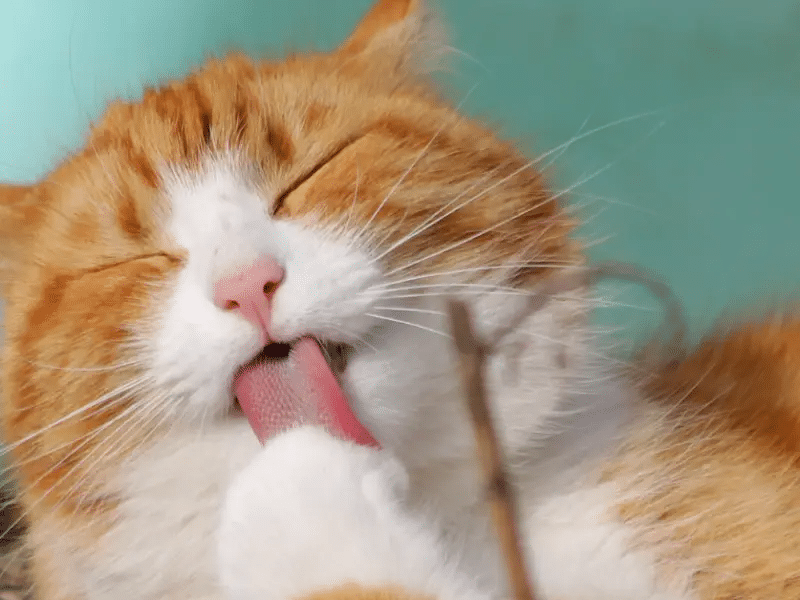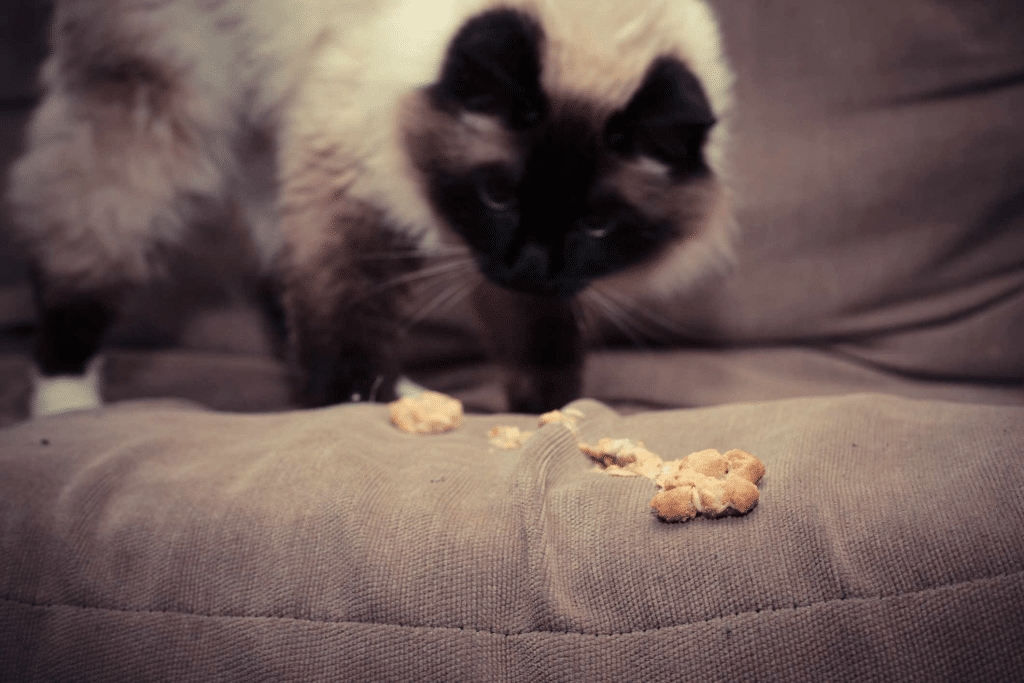All cats can develop hairballs, but long-haired cats or cats that shed frequently are more likely to do so. Sometimes, hairballs are nothing more than a mess to clean up. However, they could indicate something more serious, such as causing vomiting or even obstructing the intestines in a dangerous way.
Exactly What Are Hairballs?
When your cat coughs up frequent hairballs, they usually aren’t a problem. If the hair hardens, it can block the intestinal tract and cause death for your pet.
The grooming process usually results in your cat swallowing hair. Sometimes, hair cannot pass through the intestinal tract and is eliminated through the body. A hairball, or trichobezoar, may then be vomited up by your cat.

Source: google.com
Causes
Getting hairballs is the result of cats’ ingested hair. It is common for cats to ingest hair as they groom themselves or each other. A few things can contribute to hairballs occurring more frequently or causing a problem in your cat, especially if the amount of hair is small.
Digestive disorders or diseases: Cancers of the digestive system, tumours, inflammatory conditions, and foreign bodies may all cause a hairball problem.
Allergies: Your cat’s skin will become inflamed or itchy if it is allergic, causing the cat to groom more often.
Excessive self-grooming: Psychologically, some cats groom themselves excessively and ingest more hair than they should. Long-haired cats or winter coats are especially prone to this problem.
Skin disorders or diseases: Cats with allergies may groom themselves more than cats with other skin issues. Hair ingest may be caused by skin cancers, parasites, or infections.
Hairballs In Cats: How To Diagnose Them
The occasional vomiting of a hairball does not pose a problem. However, if you are concerned that your cat has an obstruction caused by a hairball, you should seek immediate medical attention. When your cat shows signs of obstruction (frequent vomiting or trouble defecating), it’s time to see a veterinarian.
Your veterinarian will probably recommend x-rays and blood tests to check for obstructions and rule out underlying diseases.

Source: google.com
Cat Hairball Treatment
Your veterinarian will determine which form of treatment is best for your cat if it has hairballs.
Preventing hairballs with a hairball preventative
A hairball preventative may be recommended by your veterinarian. This product acts as a lubricant to facilitate the passage of hairballs through your cat’s digestive tract. Using Cat Lax on the cat’s paw and licking it off is an example of a product they can use.
A change in cat’s diet
You may be able to help your cat pass and eliminate the swallowed hair by changing his or her diet. You may be advised to eat a diet that is high in fibre by your veterinarian. A fibrous diet keeps your cat’s intestinal tract functioning properly, which is exactly what they need to pass the swallowed hair. Your veterinarian may also recommend giving your cat treats and food that prevent hairballs.
Cat Grooming regularly
Hair that is licked and swallowed by your cat due to excessive grooming is caused by excessive grooming. You can reduce the amount of hair it ingests by brushing your cat’s fur several times a week. Your cat can swallow loose or dead hair if you brush it before it swallows.
Removal by surgical means
If your cat develops a hairball in its intestinal tract, it may require surgery to remove it. Surgery may only be recommended in severe cases that pose a life-threatening risk.
You should consult your veterinarian before administering a preventative or changing your diet. When it comes to treating your cat, a veterinarian can help you make the right choice.
Cat Hairball Prevention
Brushing your cat regularly will reduce the amount of fur it ingests and prevent it from getting a hairball. It can also help to give your cat a haircut, especially if its hair is long.
You may want to consider petroleum-based oral supplements if your cat still experiences hairballs after taking these preventative measures.
You should also ensure that your cat doesn’t consume things that can aid in creating hairballs, such as rubber bands, twist ties, etc.
Conclusion
There are several options for treating hairballs in cats. One of the most common treatments is to use the best hairball remedy product, which is available in most pet stores. Using pumpkin puree as a preventative measure for cats’ hairballs is also possible.
FAQs
Is it possible to help a cat who has a hairball choke?
Seeing your cat struggling to breathe is one of the most frightening things in the world. There are many causes of hairballs in cats, and determining when your pet is experiencing one can be difficult.
Cats regurgitate hairballs after swallowing them and regurgitating them. It is possible for cats to choke on hairballs if they eat too much hair or fur. Coughing up a hairball is common in cats, but if the cat does not produce one within 12 hours, it could indicate an intestinal blockage or an allergic reaction.
Taking your pet to the vet if you suspect he or she choked on a hairball is the best course of action.
What is the recommended amount of olive oil for my cat to help him get rid of hairballs?
Almost every cat owner has asked this question. Olive oil is usually the best solution for your cat, but there are other options as well.
To begin with, make sure the cat does not have any health problems.
An example would be hairballs or diabetes. If the cat has any of these problems, it will require different treatment than a cat without them. Following are some options for you if there are no health problems with the cat:
You can give your cat an olive oil teaspoon every other day or every day if you wish.
Wet food is an alternative to dry cat food.
Instead of giving your cat olive oil, you can feed him pumpkin puree.
What is the reason my cat is trying to throw up but isn’t able to do so?
Your cat is likely to throw up a lot since they love food. They may experience this if they eat too much or if they eat something that does not agree with them.
Your cat’s oesophagus may be blocked if your cat cannot throw up. Hairballs, toys, or objects swallowed and then stuck in the cat’s stomach could cause this. Immediately take your pet to the vet if you suspect this is the case.
